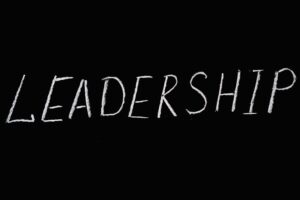Top 5 Reforms That Revolutionized Education in the US

The US recognized the importance of having an advanced and up-to-date education system that would prepare a qualified cadre in the early 1800s. Since that time, the government and activists have taken steps to bring American education to the highest level. The status of US education in the world is a product of a long and complex period of reformation and transformation of the entire system.
The US education system wows many people across the world, pushing millions of students to look for opportunities to enter American universities. This is neither a cheap nor an easy thing, but there are still options to get a degree in one of the US universities for a reasonable price.
American students often complain that education is all about essays now. That’s the fact. There is no discipline where American instructors would hesitate to task students with essay writing. Such assignments are very much common in US universities.
However, if writing is not your thing, there is always help. You can request an EssayHub online essay writing service to craft a perfect essay for you. They are experienced in all sorts of assignments and can craft a great essay in the shortest time possible.
Yet, let’s get back to the topic. Let’s study the evolution of the American educational system and see how it is changing.
Horace Mann and His Reforms
The biggest step toward making education accessible to the public was made thanks to Horace Mann from Massachusetts. He headed the common-school movement, where he advocated for financing public schools out of local property taxes. He also helped draw education away from Calvinist philosophies of discipline to more civilized methods such as positive reinforcement.
The very fact that Horace Mann managed to bring about state-sponsored public education was a revolution. It immediately resulted in growing literacy rates. By 1870, the number of public schools practically outnumbered the private ones.
Catharine Beecher’s Advocacy
Catharine Beecher is well-known for her anti-slavery activism. However, she is also famous for her feminist ideas. She was the one who advocated for education for women as a way to develop and advance professionally. That’s why she opened the first college for women, aiming to help young ladies master the teaching profession.
This helped shift the paradigm that the only thing women are good for is family. Instead, this college was growing a new generation of independent women who were literate and self-motivated. Even though they could not master many professions at that time, Beecher’s effort was all about providing women with an opportunity to study.
Parochial Schools
The movement for creating parochial schools emerged alongside Mann’s common-school reform. American Catholics, German Lutherans, Calvinist Dutch, and Orthodox Jews all started establishing parochial schools. The government forbade local authorities to fund such schools, but they still demonstrated significant growth in numbers. The congregations sponsored these schools, encouraging youth to study religion, science, math, language, and arts.
Despite being limited in finances, parochial schools positively contributed to the growth of literacy among Americans. This helped to largely increase the number of educated people within the country.
Should you want to know more about the specifics of parochial schools or if you are required to write an essay on the topic, you can always address professional paper writers from PaperWritingService for help. They are the best at providing all kinds of information and academic assistance.
Morrill Land-Grant Acts
Another round of reform started when President Abraham Lincoln signed the Morrill Land-Grant Acts, allowing for the creation of land-grant colleges. This bill was a response to a political movement for the creation of agriculture colleges.
Under this law, every state was eligible to receive federal land to build and fund educational institutions. These initiatives produced large numbers of agricultural scientists and industrial engineers, who were critical for building a technology-based economy.
Later, the act was amended to remove race bias. This helped Black people of America get access to education and actually graduate.
https://unsplash.com/photos/WE_Kv_ZB1l0
Standardized Testing
Since that time, America has enabled many reforms that helped bring the system to the state it is now. Most of them were related to funds and curriculum planning. However, the new round of crucial reforms started at the end of the 1900s, introducing testing as the best way to assess student knowledge.
It remains one of the most effective yet contradictory reforms in US education. On the one hand, it helped define academic standards, making it easier to identify people eligible for university admission. On the other hand, standardization kills creativity. Some students claim they cannot pass through the standardized processes as they leave no room for creativity and innovation.
Takeaway
The American education system had to go through lots of reforms and transitions over the last two hundred years to become one of the best in the world. It’s hard to describe this path because it is complex and sometimes contradictory.
However, these and many other reforms can really become a guiding book for other governments. After all, these initiatives and movements helped America strengthen its approach to equality in education and quality enhancement.






